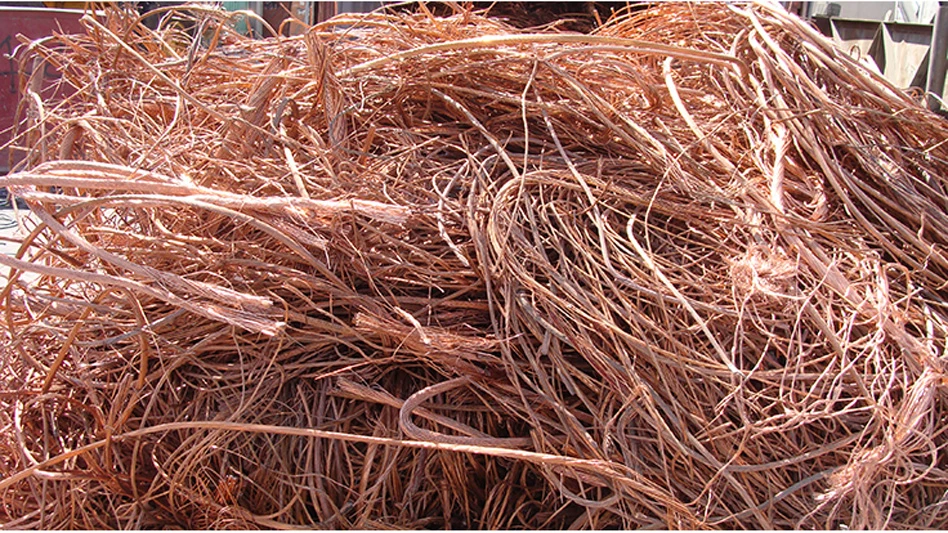
Recycling Today archives
For more than two decades, scrap processors in North America and Europe became accustomed to making regular shipments of baled wire and cable scrap to China. The nation’s buyers offered desirable pricing for a scrap grade that many Nortn American processors were unequipped to handle.
Scrap import regulations China put in place starting about 10 years ago, however, changed the landscape for wire and cable. Some Chinese processors of the material set up shop in Malaysia and other Asian countries, and wire scrap continues to head there.
However, in the past several years, Indonesia, Malaysia and other countries in the region have introduced restrictions similar to those adopted by China.
As of 2023, while some coated wire and cable scrap can still find a home in Asia, it has become far more common for processors in Europe and North America to process the material into a cleaner grade of copper or aluminum that can meet specifications in nearby and distant markets.
Makers of wire processing equipment have released a steady stream of announcements regarding installations in North America and Europe and in the past several years have acknowledged lengthy order backlogs.
“There has been significant investment in the cable chopping industry in the United Kingdom and the European Union,” David Dodds, CEO of U.K.-based Sackers Ltd., tells Recycling Today.
Dodds says Sackers is among the companies that have made such an investment, finding it a better alternative to relying on overseas markets with shifting regulatory landscapes.
“We as a business have invested over 1 million [British] pounds ($1.2 million) in processing capacity and can process up to 10,000 metric tons per annum now,” Dodds says.
Makers of wire processing equipment offer a range of systems, some for processors with modest volume ambitions but also for those who seek significant scale.
In North America, a handful of companies have specialized in the grade, setting up multiple processing lines and drawing in wire and cable from a wide geographic radius. One such firm, Mallin Cos. of Kansas City, Missouri, told Recycling Today for a 2018 article it procured material from throughout the vast U.S Midwest and beyond.
Dodds says Sackers has set up a system that likewise requires it to draw in material from well beyond its home base in Suffolk in southeastern England.
“The days of small 250 kilograms (550 pounds) per hour processing plants are being dwarfed by investments for plants that can handle all types of material, from steel wired armored cable up to high-grade copper cable,” he says.
Little on the global regulatory horizon indicates Asian countries are about to welcome a return stream of baled and still coated wire scrap. This is especially true in Europe, where pending Waste Shipment revisions will require new sets of permission and an auditing process to ship material from the EU to nations with developing economies.
At the same time policymakers in Brussels are making it harder for material to leave, governments in Asia continue to scrutinize incoming scrap. The Malaysian Ministry of International Trade and Industry has been working with a quasi-governmental inspections agency called SIRIM QAS International to add new procedures and hurdles in that nation.
Dodds says the factors influencing increased processing of wire and cable in developed nations are likely to continue to add up. “I think it’s only a matter of time before Indonesia and Thailand will go the same way as China, when they wake up to how much is being imported,” the U.K. recycler adds.
Latest from Recycling Today
- BMW Group, Encory launch 'direct recycling’ of batteries
- Loom Carbon, RTI International partner to scale textile recycling technology
- Goodwill Industries of West Michigan, American Glass Mosaics partner to divert glass from landfill
- CARI forms federal advocacy partnership
- Monthly packaging papers shipments down in November
- STEEL Act aims to enhance trade enforcement to prevent dumping of steel in the US
- San Francisco schools introduce compostable lunch trays
- Aduro graduates from Shell GameChanger program





